Best of Wedding Photography
Quite a bit late now, we're happy to announce the launch of best of wedding photography. This is a new, invitation-only membership site for top wedding photographers. It was launched…
Quite a bit late now, we're happy to announce the launch of best of wedding photography. This is a new, invitation-only membership site for top wedding photographers. It was launched…
I think that most people believe that the key to taking good pictures is mostly technical. First you need a good camera and then you need to learn all the advanced trigonometry and physics necessary to use said camera. (“So, a higher ISO means more light but a higher shutter speed means less light? What?) All that stuff is necessary, sure, but let’s not overlook the thing that’s really important: Memories.
Always ask “Why?”
Every time you reach for your camera, ask yourself, “Why am I taking a picture? Why did I reach for my camera?” Most of the time it’s one of two things: Either you want to preserve a memory, or you saw something that sparked a memory in you and you want to record it. If you approach the picture with that in mind, you will take better, more meaningful pictures of your family.

My kids were putting out Halloween decorations last year and I grabbed my camera to record the memory. Don’t stand your kids up and take a snapshot. You have thousands of snapshots of your kids and they all look the same. Instead, ask “Why?” In this case, the reason I was taking pictures was because my children were putting out decorations. The decorations were the memory… the process. So, I focused on the decorations, not the children. My technical knowledge allows me to take the picture from the proper angle with the proper light, etc, but it’s my desire to preserve the memory of my children decorating the house that leads me to create an image that is unique and so much better than a snapshot.
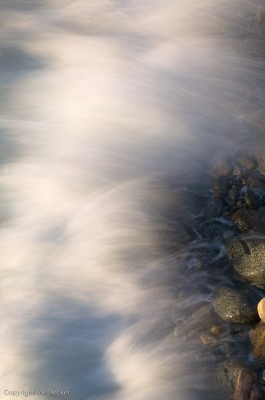
If you like this article, you can now get the book! Joe has expanded the “Tuesday Composition” series into an inspiring new ebook on composition, especially for nature photography. Check it out: The Tuesday Composition.
Like mist and fog, water is a subject that deserves it’s own consideration compositionally. With the exception of very still lakes and ponds, one of the things that makes water “look like water” to us is the way that it moves. We can’t present this movement in a still image to a viewer directly. Instead, we have to translate it into a still image by making an exposure; and we use a variety of controls such as shutter speed and composition to help communicate a sense of that motion.
When we want to capture a sense of movement in water there are several things to keep in mind. Shutter speed has a significant effect-a waterfall, cascade or even surf against a coastline will have a very soft, gentle feel if we use a long exposure. Faster exposures will stop individual droplets in air, creating a greater sense of energy. Shutter speed isn’t the only thing to keep an eye on, though. The way we compose the path of water through a scene can also affect how viewers experience water moving through a scene. Where possible, try and make it easy for the viewer’s eye to trace along the lines of the water’s path. Your images will (all other things being equal) be more effective if the visual flow of the water isn’t interrupted by things that block the view of the water. Diagonals and S-curves can also create an additional sense of motion. (more…)
Even in this world of online meetings, websites and blogs we need a printed portfolio book to show prospects. I’m in the process of re-doing my books so I’ve been researching this pretty heavily.
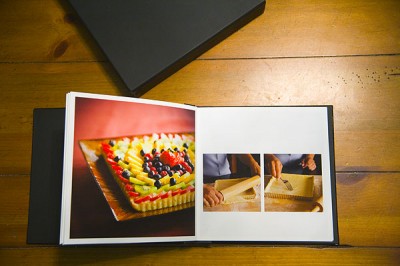
The format and styling of your book will depend greatly on who you’re marketing to as well as your own personal style. A wedding book is not going to be anything like a commercial book which won’t necessarily look like a pj book. In general here are a few nuggets of wisdom I’ve been able to scrounge in my research. (more…)
I’ve been trying to write about bounce flash at weddings for about an hour now. The problem with explaining bounce flash is that it seems simple at first (just point the flash over your shoulder!) but then there’s a snag … a situation where that doesn’t quite work. So, you talk about the snag, which leads you down another path (diffusers and bounce cards!) … which veers off into some other tangent (shadows and background!) and the next thing you know you’re typing the words “raccoon” and “inverse square law” in the same sentence and you just have to stop.
So, here’s what I’m going to do: I’m going to post some pictures from a recent wedding and talk about the lighting in each one. Hopefully I will be able to stay on topic. (By the way, I am a wedding photographer in Tampa, FL and no raccoons were harmed in the writing of this article.)
This particular wedding reception was in a small room with low ceilings that were white (mana from heaven for a bounce flash photographer). I was able to shoot with my flash pointed back over my left shoulder most of the night. I think a lot of people tend to believe that you either bounce off a wall or you bounce off the ceiling in front of you. It’s important to realize that you can bounce off the ceiling behind you as well (especially if it’s low). You will typically lose some light, since most of it will bounce to the back of the room but you’ll still get some back from the ceiling, tablecloths, walls, etc. I had my flash dialed up to +1 most of the night. Could I have taken this shot with a diffuser or direct flash? Sure, but I would have lost contrast in the subject. The reason the dancing man stands out is because the light falls off across his body (notice the shadow on his face).
Did you know that by using Photoshop you can create simple, stunning panoramas quickly and easily? Don’t need a bunch of sophisticated fancy equipment or software, just a tripod, digital camera and Adobe Photoshop. Now there are special panorama heads, such as the Manfroto 303 VR Panorama Head but don’t let not having one keep you from creating your own panoramas. (more…)
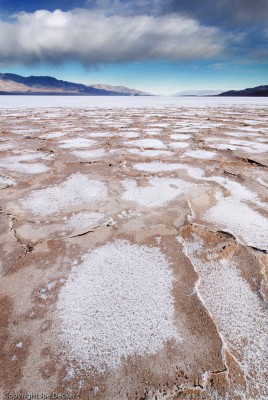
If you like this article, you can now get the book! Joe has expanded the “Tuesday Composition” series into an inspiring new ebook on composition, especially for nature photography. Check it out: The Tuesday Composition.
A while back we talked about visual echoes–and we primarily focused on repetitions of two similar or contrasting objects. Today I’m going to revisit that topic with a greater emphasis on repetition generally, whether two, eleven or a million similar image elements. If you didn’t get a chance to read the echoes post, I suggest going back and and reading it now, many of the ideas in today’s post will relate to and reflect on the ideas I presented there.
Repetition is a powerful and amazingly versatile tool.
One of my favorite uses of repetition in composition is in simplifying an image. In general, images with many kinds of disparate elements can be harder for the viewer to make sense of–put enough elements together and you take away an easy sense of what elements of the image are important, dominant.
Repeating patterns in an image can help organize all of those elements into a pattern that’s easier for the viewer to understand. Salt Polygons at Sunrise has hundreds of elements, but our eye quickly integrates the underlying pattern of the salt polygons and makes sense of what’s going on in the image. A random collection of that many disparate elements in an image would feel much more chaotic. (Of course, that might be what you want, but more often, my own work tends towards less chaotic.) (more…)
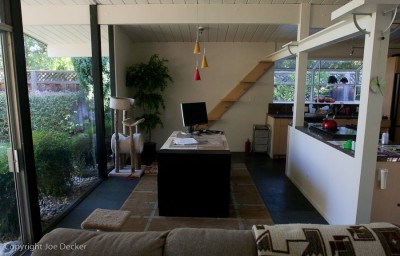
In my previous article on tilt-shift lenses I talked about tilt and how that affects the plane of focus. It is a pretty great feature, and it is (I believe) behind the increased energy we’re seeing in the press and from camera manufacturers about these lenses. But it’s far from the only trick these little wonders can perform, today we’ll talk about the most basic use of shift (including what the large format guys would call rise and fall), to correct perspective in a photograph.
Perspective control using shift has been a staple of architectural photography for decades. When photographing a building from ground level, perspective causes the top of the building (which is farther from the camera) to show smaller in the image than the bottom. In seeing the real world around us this effect appears quite natural, but in a photograph the effect often makes the building appear as if it were falling over backwards. What we need for the image to “appear” more natural is a way to reduce the perspective-induced distortion of the shape of the building. (more…)
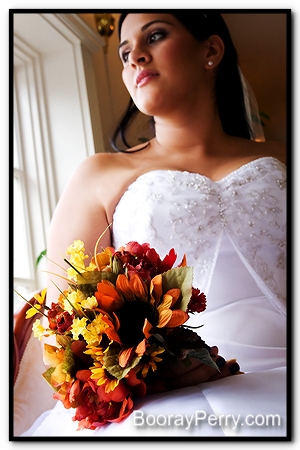
There are so many issues that wedding photographers can argue about: light, composition, equipment, price, style and so on. I think it’s a hoot that the one issue that always seems to get the most varied and heated opinions has nothing to do with the actual art of wedding photography (I’m a wedding photographer in Tampa, FL).
I’m talking about “Uncle Bob.”
If you’re a wedding photographer then you know exactly who I’m talking about. For those of you who don’t know, “Uncle Bob” is the guest at the wedding with an expensive camera who has decided to become an un-official wedding photographer for the day. Every time you pose someone for a shot, Uncle Bob is right there snapping away. If someone steps in front of you at an important moment during the reception, it’s Uncle Bob. Uncle Bob means well, but he’s oblivious to the fact that you’re doing a job and he’s interfering (I once had Uncle Bob get mad at me because I wouldn’t “wait my turn” to take a picture of the Bride and Groom during an emotional moment at the reception.)